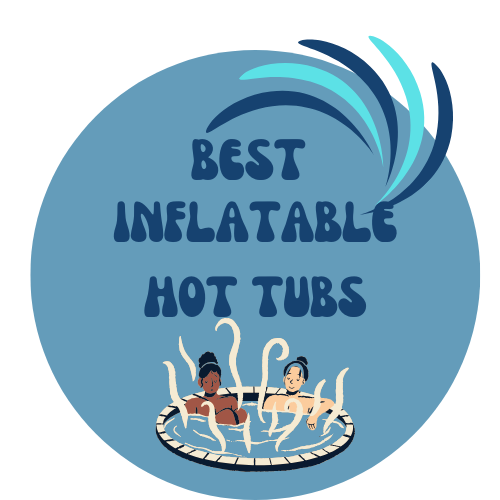The Honest Cost Comparison No One Gives You
Inflatable hot tubs have exploded in popularity over the last few years — and for good reason. They promise the full-body soak, the warm bubble therapy, and the backyard spa experience… without the five-figure price tag of a built-in unit.
But is that really true?
Are inflatable hot tubs actually cheaper — or just a short-term fix that costs more in the long run?
Let’s break it down by the numbers: upfront costs, installation, maintenance, electricity, and lifespan. No marketing fluff. Just real-world costs so you can make the smart choice.
1. Upfront Cost: The Biggest Gap
Let’s start with the most obvious difference — the purchase price.
- Inflatable Hot Tubs typically range from $300 to $800, depending on brand, size, and features (jets, LED lights, freeze protection, etc.). Even luxury inflatable models rarely break $1,200.
- Built-In Hot Tubs range from $4,000 to $15,000+ — and that’s before you install anything. Add upgrades like custom decking, sound systems, or saltwater conversion, and the total climbs fast.
Verdict: Inflatable tubs win by a landslide on initial price. You can buy five inflatables for the cost of one decent built-in spa.
2. Installation: One Requires a Toolkit, the Other Requires Contractors
With inflatable tubs, installation is… well, barely a thing.
You unbox it, plug it into a standard outlet, connect the pump, fill it with a garden hose, and wait. No tools. No permits. Most people have their tub set up within a few hours — often without help.
Built-in hot tubs? Whole different beast.
You’ll likely need:
- A concrete pad or foundation poured
- Electrician to install a 220V dedicated circuit
- Potential plumbing upgrades
- Maybe even a building permit, depending on your location
These add another $1,000 to $5,000 (or more) depending on where you live and how your yard is set up.
Verdict: Inflatable tubs don’t just win — they obliterate built-ins when it comes to setup time and cost.
3. Maintenance: Surprisingly Similar (Until Repairs Come Up)
Whether it’s inflatable or built-in, hot tubs require the same basic maintenance:
- Sanitizing the water (chlorine, bromine, or salt systems)
- Balancing pH and alkalinity
- Cleaning or replacing filters
- Draining and refilling every 4–6 weeks
So far, the cost difference is minimal — maybe $15–$30/month in chemicals and supplies for both.
Where things start to shift is repair and replacement.
If an inflatable tub breaks, it’s often cheaper and easier to replace the entire thing — especially if it’s out of warranty. Replacement parts can be hard to find, and some cheaper brands don’t offer support.
Built-in tubs, on the other hand, usually come with long-term warranties and more service options — but repair costs can be steep. Replacing a pump or control panel could run $400–$1,500, and you’re often paying a tech just to come diagnose the issue.
Verdict: Month-to-month maintenance costs are similar. Long-term, inflatable tubs are cheaper — but also more disposable. Built-ins are built to last, but costly to repair.
4. Electricity Costs: Inflatable Tubs Can Be Sneaky Expensive
This is the most surprising cost category for many new owners.
Inflatable tubs use standard 110V power, which sounds great… but they often have less efficient heaters and pumps, meaning they take longer to heat up and need to run more often to maintain temperature — especially in cold weather.
Expect to pay $30 to $60/month in electricity for a well-insulated inflatable tub in moderate climates. In winter? That number can easily double if your tub lacks freeze protection.
Built-in tubs, on the other hand, usually run on 220V systems, which are more efficient. They heat water faster and maintain temperature better, especially in insulated hard shells with heavy covers.
That said, they’re also always on, and that can add up — expect monthly energy bills of $40 to $80, depending on your use and climate.
Verdict: Inflatable tubs are cheaper to run short-term, especially if used casually. Built-ins are more efficient over long-term, heavy use — but come with a bigger base load.
5. Lifespan: Temporary vs Permanent
An inflatable tub lasts anywhere from 1 to 5 years, depending on care, climate, and brand quality. Most users find the sweet spot is around 2–3 years before leaks, pump failure, or wear-and-tear become a problem.
Built-in hot tubs? With proper maintenance, they can last 10 to 20 years — sometimes more. They’re designed for heavy daily use and can be repaired over time instead of fully replaced.
Verdict: Inflatable = short-term solution with lower cost per year. Built-in = long-term investment, but higher upfront and ongoing cost.
So… Which One Is Cheaper?
Let’s break it down in a quick side-by-side:
| Category | Inflatable Hot Tub | Built-In Hot Tub |
|---|---|---|
| Upfront Cost | $300–$800 | $4,000–$15,000+ |
| Installation | DIY, free | $1,000–$5,000+ |
| Monthly Maintenance | ~$25–$30 | ~$30–$40 |
| Electricity | $30–$60/mo (can spike) | $40–$80/mo |
| Lifespan | 2–4 years average | 10–20+ years |
| Repair Cost | Often replaced entirely | Parts can be expensive |
Final Verdict:
If you want a low-commitment, affordable, and quick way to enjoy hot tub life — inflatable tubs are absolutely the cheaper and smarter choice for casual users, renters, or first-timers.
But if you’re looking for a decades-long investment, have the space, and don’t mind a bigger upfront hit, a built-in hot tub can pay off in durability, energy efficiency, and long-term ROI — if you use it regularly.
Choose based on your lifestyle, not just your wallet. Because the only thing worse than overspending… is never soaking at all.
